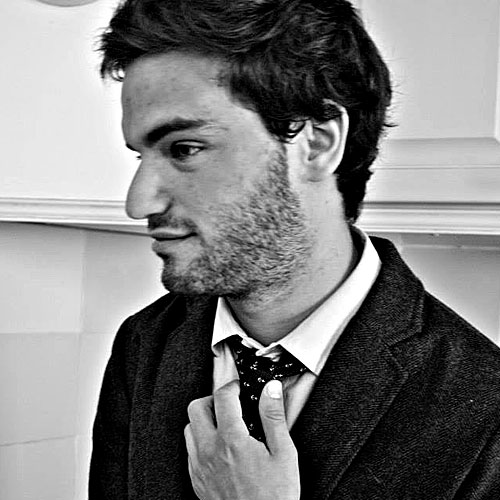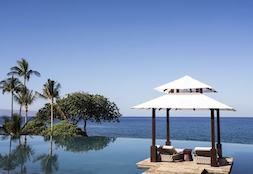Andre the Giant wrestled before my time, but he was and is one of those characters, for me—and, I’m sure, many others born a bit too late—who felt nonetheless like someone I knew. Before seeing the eponymous new documentary, from Bill Simmons and HBO, I had an idea of what he looked like. I had an idea of his low and resounding, yet gentle voice. I had a sense of how thick his hands might be, the black spandex he wore into the ring. But I don’t know how I knew all these attributes. The images seemed to have snuck into my subconscious, the way other ubiquitous cultural myths tend to.
Indeed, Andre the Giant, as wrestling historian David Shoemaker makes explicit in the documentary, is a visceral merger of man and myth. We are a myth-making people—always have been—and while all professional wrestlers, by dint of their occupation, perpetuate fictions about themselves, none did so with the tactility that Andre could, given his literal gigantism: at 7’4”, weighing over 500 pounds, with hands that could palm your entire skull, he was a character out of a fairy tale living uncomfortably within the confines of reality. As Vince McMahon, the longtime CEO of the WWE admitted, you could say pretty much anything you wanted about Andre and people would believe it—that he had 80 teeth, or two hearts, or could drink over 100 beers. The Giant so disrupted audience’s perceptions of what was humanly and physically possible that their conceptions of what were actually possible became elastic.
The director Jason Hehir is certainly cognizant of this fact, as are its talking heads. Born Andre Roussimoff in a small village in France, in 1946, the film recounts the origins of a boy who never stopped growing, frequently laying narration over a ceaselessly growing plant, redolent of Jack’s magic beanstalk. After being roped into wrestling while in the gym for rugby, he was soon trotted out around France, before eventually falling into the hands of Vince McMahon, Sr., who then operated the New York territory of professional wrestling. (Before the WWE took over and cable television broadcast wrestling to the masses, in the ‘80s, regional fiefdoms reigned over the sport.) Andre the Giant became not unlike a traveling circus act, sure to sell out wherever he went. The people were, understandably, in awe of him. And he demanded respect from fellow wrestlers, lest they face his wrath: in the early going, at least, nobody was ever going to beat him, and he could use his real brute strength to intimidate performers both in and out of the ring.
Some of the best anecdotes about Andre come from his fellow wrestlers. The legends about his drinking are infamous; most wrestlers, one former combatant says, drank a six-pack after a match—Andre would drink an entire case. Another claims he saw him drink 106 beers in one sitting. Rob Reiner, who directed Andre in The Princess Bride, claims he drank 20 bottles of red wine before having to be lowered by wires, in a drunken stupor, onto a horse to shoot a scene. He had a certain magnetism with women as well. Ric Flair, one of Andre’s wrestling rivals, suggestively says he wore a size 24 ring, and size 27 shoes, leaving us to imagine the rest.
Some of these anecdotes feel, at the very least, embellished: how is it possible for a man, even of his size, to finish three bottles of cognac in one night? And yet the brilliance of Andre the Giant is that you kind of believe them, regardless. The veracity of the claims don’t matter much anyway, because the absurdity of it all feels true to a story about a man shrouded in his own myth. In a segment about Andre’s famous title fight against Hulk Hogan in Wrestlemania III, Vince McMahon, Andre’s handler and Hogan all claim to have not known how Andre would “finish” the fight. To hear them tell it, McMahon let Hogan go out in front of almost 100,000 people for the biggest fight of his life without knowing how it would end. This isn’t to say they were lying or withholding as interview subjects. But it’s also hard to discern whether or not or how much they may still be actively contributing to the myth of Andre the Giant.
Documentaries, particularly those that center on a single person, inherently transform their subjects into myths. Such is the nature of the beast. But what’s especially interesting about Andre the Giant is that its subject is already inherently mythic, in ways few ever have been. By just making the movie, Hehir ends up participating in it; to create a documentary on Andre’s life is to investigate the medium itself: how we create and sustain myths about these real, larger-than-life human beings.
This may read like a condemnation of the film. It’s not. Hehir movingly explores what it was like for Andre to live in the real world—his pain, physical and emotional, as well as his tragic inability to hide. Any other wrestler wears a mask, whether literal or figurative, they can discard once they leave the ring. Andre couldn’t go anywhere in public as anyone other than the Giant. He was so invested in his wrestling persona that he failed to seek medical help to arrest his condition (technically called “acromegaly”), because he thought it might affect his career; when he became too impaired to enter the ring, he appeared to lose his will to live.
The documentary ends where it began—in France, with his siblings, to whom Andre was simply their brother. Ultimately, what’s so startling about Andre the Giant is that while it does justice to the myth of its protagonist, it also manages to do justice to the man behind it.






